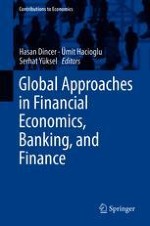2018 | OriginalPaper | Chapter
10. Assessing the Twin and Triple Deficit Hypotheses in Developing Economies: A Panel Causality Analysis
Authors : Arzu Tay Bayramoğlu, Zafer Öztürk
Published in: Global Approaches in Financial Economics, Banking, and Finance
Publisher: Springer International Publishing
Activate our intelligent search to find suitable subject content or patents.
Select sections of text to find matching patents with Artificial Intelligence. powered by
Select sections of text to find additional relevant content using AI-assisted search. powered by
